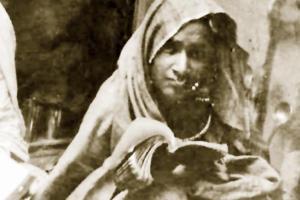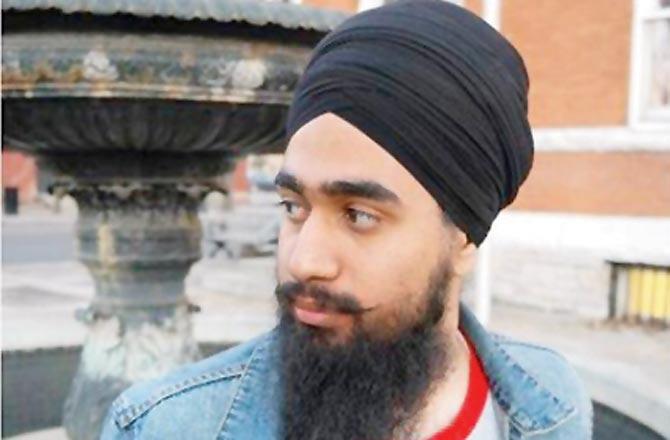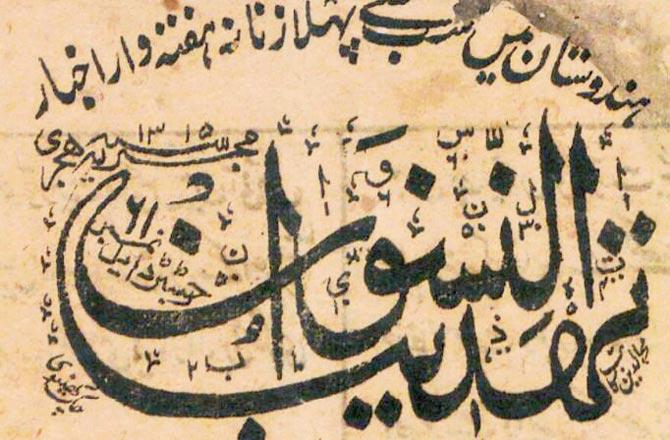A researcher is documenting stories of the quintessential Punjaban, whose contribution to our colonial history has long been forgotten

A young Punjabi girl reading a Christian text. Circa 1890s. Pic courtesy/Archives of Church Missionary Society
Not many would know that in 19th century Punjab, when purdahnashin was a way of life for its women, Hardevi Roshanlal, the widowed daughter of Rai Kanhaiya Lal of Lahore, not only remarried for love, but also went on to pen the first ever Hindi travelogue — London ki Yatra (1887) — written by a woman. Her rebellious spirit saw her take great strides, as she continued her work towards emancipation of women, publishing a Hindi language women's magazine, Bharat Bhagini.
A quick Google search or even a tedious skimming of history textbooks, might make no mention of Hardevi's glowing contribution. But, if you ask Toronto-based researcher Harleen Singh, he will admit that she has been his most interesting find yet. The 23-year-old, who runs The Lost Heer Project on Instagram, has been looking for stories like hers, to document how women, though sidelined, played an important role in colonial Punjab. "For me, Heer is a quintessential Punjaban, someone who dared to love and resist the patriarchal society of 18th century Punjab," says Singh, originally from Delhi.
ADVERTISEMENT
While Singh started sharing The Lost Heer posts on his handle @thesingingsingh only late last year, research for it began as early as 2014. "I came to India for four months while on vacation from University, and during that time, I decided to conduct interviews with Partition refugees. While speaking to some of the women, I realised that a lot of what they were sharing with me, was something I had absolutely no clue about. I felt a need to delve further into their lives, and find out how they lived over hundred years ago," says Singh. Being an ardent reader of the works of Rabindranath Tagore, who wrote of how women played a significant role in the Bengali Renaissance, Singh found it strange that such "role models were missing in Punjab". "This was only because of lack of documentation," he says.

Harleen Singh
Singh began, by taking baby steps. "My grandmother once told me about how she made dal without using tomatoes and onions. This recipe was handed down to my mother and through word of mouth. Not just recipes, the older generation are repositories of so many memories related to their mothers, in-laws and grandmothers. I realised they were the best resource." Apart from interviewing many elderly women, both in India and from the diaspora, Singh, who can read Urdu, Punjabi and Hindi, also went through vernacular newspapers. His project thus, uses everything from memories, objects, family stories, recipes, old journals, diaries, newspapers and even embroidery practices (like phulkari), to stitch an interesting, and previously inaccessible, narrative of how Punjabi women lived.
While Singh has very consciously hand-picked empowering stories from Punjab, the state of women in the early 1800s was anything, but comforting. The rabid rise of female infanticide with several different kinds of murder rituals being practiced to keep their numbers in check, child marriage and the rigid culture of purdah, meant that existence of women in the public space was next to nil. With the coming in of British missionaries who used local women to spread the word among others, and the subsequent Hindu reform movements spearheaded by the Arya Samaj, small doors began opening for them.
On his Instagram page, he writes about reformist Muhammadi Begum's Tehzib i Niswan, which was published from Lahore in June 1916. Tehzib, he says, was Asia's first Urdu journal run by a woman. "Muhammadi Begum was the wife of a migrant from Uttar Pradesh, who had moved to Lahore. Her story also helped me understand the different feminist waves in Punjab, which was actually led by women who came from Bengal and UP, where emancipation had already taken root."

The cover of Tehzib i Niswan Lahore from June 1916. Pic courtesy/ British Library
By mid-1900s, Punjabi women had come to occupy a significant space in the Indian political sphere. The Lost Heer mentions Shanno Devi Saigal, a staunch anti-colonial activist and promoter of female education in Punjab, who became the first woman MLA to run from Multan in the elections of 1940. Singh hopes to compile his research and put it together into a book. "Some might find this to be an eccentric project. But this has been exercise in self-discovery, and will hopefully help show the world that we had great women in the past, whom daughters of today, can look up to."
Catch up on all the latest Mumbai news, crime news, current affairs, and also a complete guide on Mumbai from food to things to do and events across the city here. Also download the new mid-day Android and iOS apps to get latest updates
 Subscribe today by clicking the link and stay updated with the latest news!" Click here!
Subscribe today by clicking the link and stay updated with the latest news!" Click here!







